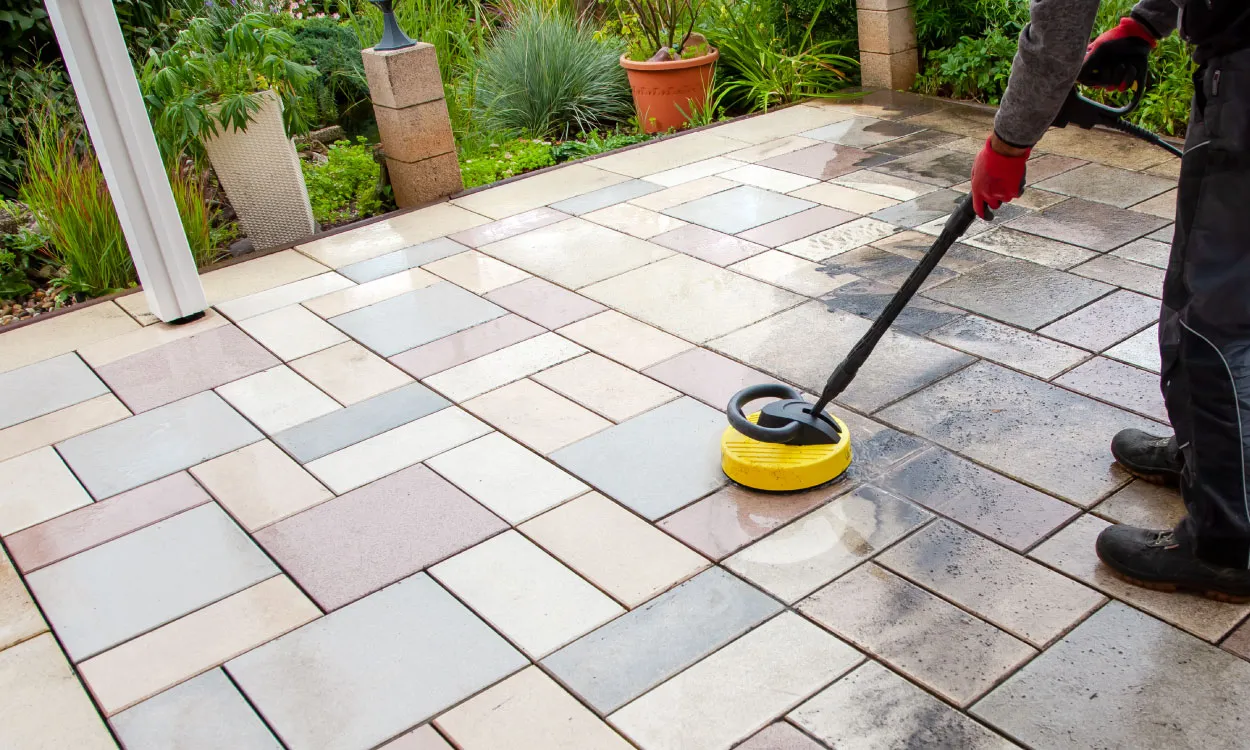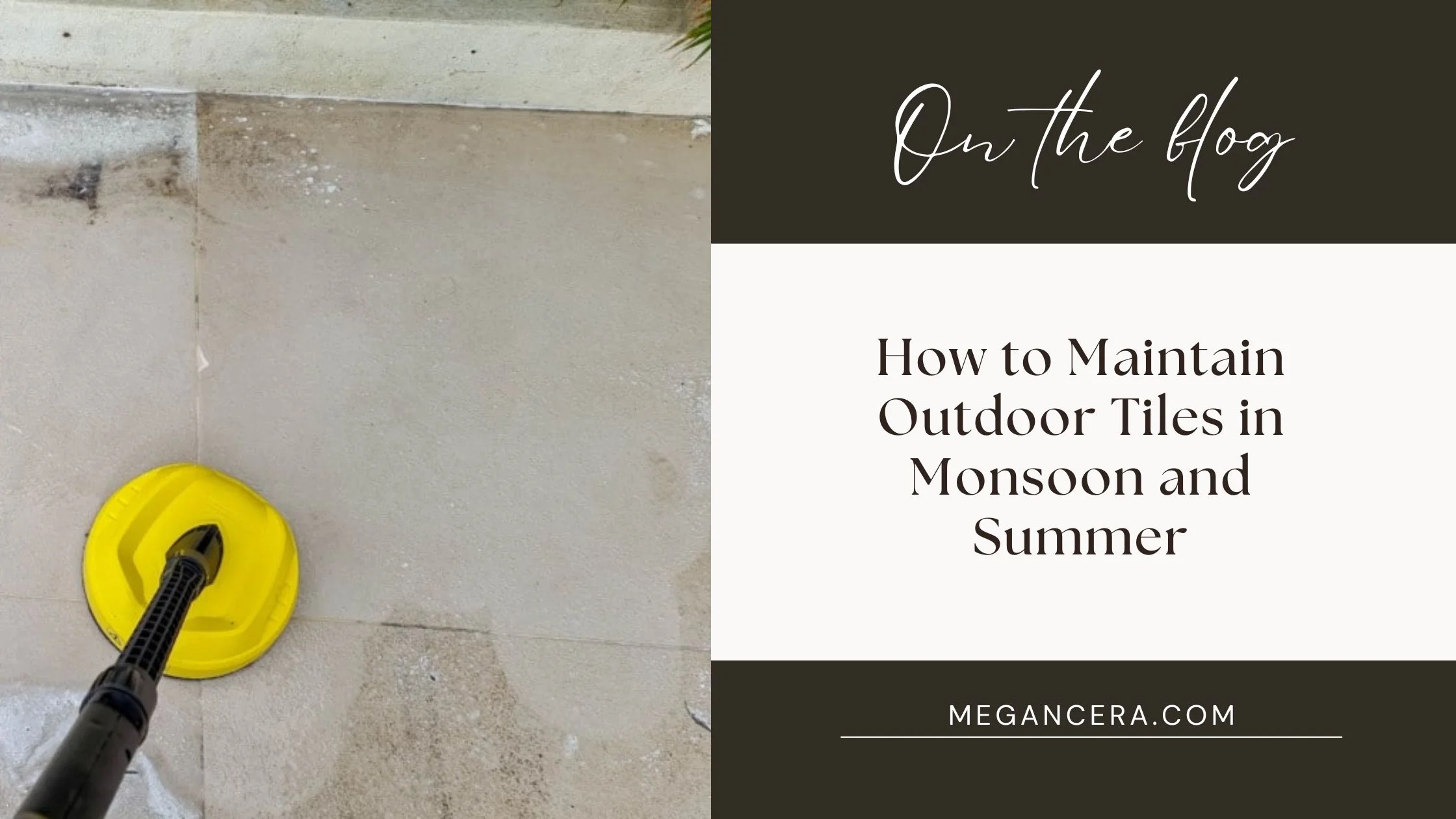Outdoor tiles offer a perfect blend of functionality and aesthetic charm for patios, gardens, balconies, and verandas. Unlike indoor tiles, however, these tiles are subject to changing weather conditions. Outdoor floor tiles also undergo water logging, algae, cracking, and discoloration during monsoon or summer. The most durable of tiles whether deck tiles, patio tiles, or outdoor porcelain tiles, can only withstand these challenges if properly cared for. And in this comprehensive guide, we cover practical and easy maintenance tips (that anyone can do) to protect your outdoor tiles all year long so that they stay beautiful and functional, come rain or shine.
Why Seasonal Maintenance Is Essential
Outdoor spaces see a lot, with tiles going through scorching summer heat, still sticking around and bearing through heavy monsoon rains. Such weather extremes over time may affect the structural integrity, finish, and grip of your tiles. If you don’t maintain your floor, you could end up with fading, slippery surfaces, cracking, or permanent staining etc. Regular seasonal maintenance helps prevent long-term damage, increases safety and prolongs the life of your tile installations. More importantly, it helps you avoid hefty bills on repairs or replacements.
How to Take Care of Outdoor Tiles During Monsoon

1. Prevent Waterlogging with Proper Drainage
During heavy monsoons, water pooling on your tile surface can cause structural damage, moss growth and, in the worst-case scenario, seepage into your sub-flooring. Whether you've used porcelain pavers outdoor, outdoor tiles for patio, or cheap outdoor tiles, drainage is key. The drainage slope to your outdoor area should be well-designed. Such piping helps prevent wear and prevents the water from stagnating in such spots and making its way back towards the tiles.
Pro Tip: Use tile leveling systems during installation and maintain a slope of at least 1.5–2% away from your home for effective runoff.
2. Combat Algae and Moss Buildup
Rain and humidity together form the perfect combination for algae and moss to grow on, especially on porous surfaces like natural stone or unglazed patio tiles. While these look unsightly, you will also have green patches and make your surface slippery and dangerous.
Solution: Clean your tiles weekly using a diluted solution of vinegar or a mild bleach with warm water. For larger areas, use a pressure washer carefully to avoid damaging the grout lines.
3. Seal the Grout Lines for Extra Protection
The weakest point, most often, is the grout lines when it comes to moisture penetration. Unease grout becomes stained from water that seeps in, and tiles loosen.
What to Do: Apply a high-quality, weather-resistant grout sealer before the monsoon begins. Reapply every 6–12 months, depending on foot traffic and exposure to rain.
4. Add an Anti-Slip Coating
In rainy months, outdoor tiles can become extremely slippery when wet. An anti-slip coating or tiles specifically designed for use outdoors will help prevent falls.
Quick Fix: Use anti-slip floor mats or adhesive treads in areas with heavy foot traffic until a more permanent solution is applied.
How to Take Care of Outdoor Tiles During Summer

1. Protect Tiles from Direct UV Exposure
Outdoor porcelain tiles, especially darker tones or glossy finishes, subjected to continuous exposure to intense summer sunlight and harsh UV rays can fade, crack, or discolor. Not only do UV rays make your tile surface look bad, but they will also wear down your tile glaze over time, shortening its lifespan.
Prevention Tips: Minimize direct exposure with umbrellas, bamboo screens, or UV-resistant fabric canopies. You can also use 20mm outdoor porcelain tiles or tiles with UV-stable coatings designed to withstand direct sun.
2. Keep Tiles Dust-Free with Frequent Cleaning
Dry winds of summer bring fine dust particles that usually settle over deck tiles, making surfaces gritty and increasing wear.
Maintenance Tip: Dust accumulates daily and you will need to sweep or vacuum the area daily. A pH-neutral tile cleaner mixed with lukewarm water works wonders for deep cleaning, mopping at least twice a week.
3. Prevent Tile Cracking from Thermal Expansion
Tiles naturally expand and contract with temperature variations. If your outdoor floor tiles weren’t installed with proper joint spacing or flexible adhesives, this thermal movement can lead to cracking or lifting.
What You Can Do: Include expansion joints during installation. Use polymer-modified, weather-resistant adhesives. Avoid dragging furniture or sharp objects on hot tiles.
4. Reapply Sealant if Tiles Look Faded
UV rays can take a toll on sealants, especially on porous outdoor tiles for patio or natural stone.
Action Point: Late spring is a good time to reapply a high-quality tile sealant. Pick a UV-resistant, waterproof sealant to maintain color, resist water, and protect against erosion.
General Maintenance Tips for Year-Round Tile Health
-
Invest in quality weatherproof tiles like porcelain pavers outdoor or 20mm outdoor porcelain tiles, specifically designed for outdoor use.
-
Place doormats and boot scrapers at entrances to minimize dirt and water being tracked inside.
-
Conduct a deep cleaning every season and check for early signs of damage like cracks, loose tiles, or faded grout.
-
Avoid harsh chemicals that may corrode or stain tile surfaces, especially those with textured or natural finishes.
Choose Megan Cera for Premium Outdoor Tile Solutions
When it comes to outdoor durability and design, Megan Cera is a leading name in tile innovation. Being a trusted manufacturer and exporter of outdoor porcelain tiles, Megan Cera provides a host of weather-proof, slip-proof, and UV-stable tile products, specially suited to the Indian extreme climate. Among its standout offerings are 20 mm outdoor porcelain tiles, known for their superior strength and durability, making them perfect for patios, driveways, and terraces. You can renovate your garden, makeover a rooftop, or plan a commercial outdoor project. Megan Cera tiles are strong, robust, can perform in any season, and will look beautiful forever.
Explore Our Outdoor Tile Colection!
Final Thoughts
Maintaining outdoor tiles is about more than what meets the eye it's about keeping your spaces valuable, safe, and durable. With these season-specific care routines and your investment in premium quality materials such as those from Megan Cera, you’ll have beautiful outdoor flooring that lasts no matter the weather.







 Live Photos & Videos
Live Photos & Videos